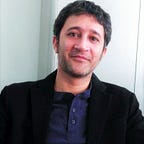Seeking Sensation: Living Life at Risk
Sensation seeking is defined as the seeking of varied, novel, complex, and intense sensations and experiences. It involves the willingness to take not just physical, but even social, legal, and financial risks for the sake of such experiences. People who consistently indulge into such acts are referred to as having the personality trait of sensation seeking.
Marvin Zuckerman, the person who developed the concept of the trait of sensation seeking, suggests four components of sensation seeking — thrill and adventure seeking (seeking exciting sensations through participating in risky activities); experience seeking (seeking excitement through the mind by leading a nonconforming lifestyle); disinhibition (seeking sensation through social stimulation and disinhibitory behaviors such as drinking); and boredom susceptibility (avoiding monotonous and boring situations and activities).
Sensation seeking has been found to be associated with varied levels of a wide range of activities such as drug use, excessive sexual behavior, and participating in risky sports. Research has also found it to be associated with delinquency and anti-social behavior.
Research shows that sensation seeking has a biological basis. Sensation seekers have low brain arousal and a very high threshold for social stimulation. This makes them seek arousal from the environment. They seem to have a strong, nervous system-based, orienting response; they are biologically primed to seek out and engage their environments.
Further, negative correlations of sensation seeking have been found with neurochemicals such as monoamine oxidase (associated with schizophrenia, depression, ADHD, substance abuse) and dopamine-beta-hydroxylase (associated with decision making, substance abuse, schizophrenia, ADHD) — both play a significant role in production of specific neurotransmitters (brain chemicals due to which neurons communicate). Additionally, high sensation seeking is associated with low levels of norepinephrine (neurotransmitter responsible for attentiveness and emotions). Such people seek stimulation in order to compensate for their lower than optimal levels of norepinephrine.
Sensation seeking also involves impulsivity or the trait impulsiveness, which is characterized by activities that have no thought, reflection, or consideration for consequences. These impulsive acts are considered to be unduly risky, which is suggestive of sensation seeking.
Impulsivity is a component of substance abuse and anti-social behavior, which are correlates of sensation seeking behavior. Impulsivity is majorly due to the imbalance of serotonin (neurotransmitter responsible for mood balance). To compensate for this imbalance (generally low levels), individuals become impulsive.
Sensation seeking has been found to correlate with Eysenck’s biological trait theory, specifically with the dimensions of extraversion and psychoticism. Extraverts (extroverts) are people who are active, sociable, outgoing, and like to be around people. According to Eysenck, extraverts have a low level of brain arousal, which makes them have a high threshold for stimulation.
It is this due to this that they seek highly stimulating environments. This is true for sensation seekers also, but they do not have a consistent preference to be around others. Therefore, sensation seeking individuals are not simply extraverts.
The psychoticism dimension of Eysenck’s theory involves varied intensities of criminal and psychopathic behavior. At the extreme end of the continuum, psychoticism involves schizophrenic and other psychotic states in which in which contact with reality is lost and there is severely disordered cognition, affect, and behavior. Psychoticism also involves low levels of monoamine oxidase, dopamine-beta-hydroxylase, and norepinephrine, which is found in sensation seeking as well.
Apart from the biological causes, Heinz Kohut, the founder of Self Psychology (school of psychoanalysis that explains psychopathology as a result of disrupted or unmet developmental needs), related sensation seeking to an unhealthy development of the self (Self is the behavioral, affective, and cognitive representation of an individual). Kohut suggests that the presence of loving and empathic relationships is the key in healthy development.
During the initial years of a child, the mother and later on, other care-takers and significant relationships, need to admire and affirm the child’s strengths, health, and specialness. When this happens, the individual develops an ideal personality type, that is, a person who has an autonomous self. Such people, according to Kohut, are characterized by healthy levels of self-esteem and by mutually fulfilling interpersonal relationships.
If this does not happen, then Kohut suggests that the individual develops a non-cohesive, empty, or injured self. One of the consequences is that the person possesses an understimulated self — a numb and empty person who may engage in sensation seeking and substance abuse. Perhaps to compensate for the numbness and emptiness, the individual gets involved into sensation seeking.
Sensation seeking is associated with a wide range of behaviors such as substance abuse, anti-social behavior, excessive sexual behavior, participation in risky sports, and other similar dangerous activities. To compensate their low brain arousal or emptiness, it becomes a necessity for such individuals to indulge into sensation seeking behavior, even though such acts may turn out to be life threatening.
